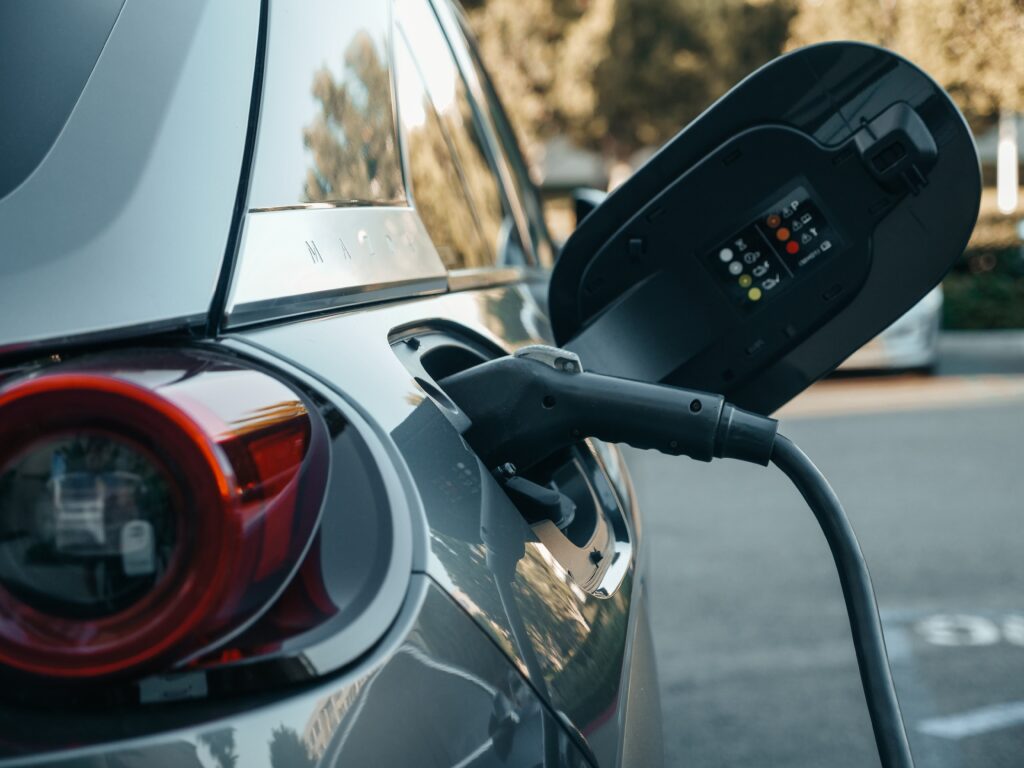
Ready to install an electric vehicle charger? There are more options than ever when choosing an EV to purchase. And there almost just as many options once you’re ready to bring your car home and start charging it.
We install several electric vehicle chargers every day and see all different types of electric vehicles.
The most common EV’s that we install chargers for are Tesla, Volvo, Rivian, Kia, Hyundai, BMW and Polestar.
So, what are the different options for electric vehicle chargers?

Level 1 Charging (Directly into a 120v Receptacle)
All EV’s that we see come equipped with an adapter that you can plug directly into your standard receptacle in your garage. When most EV dealers tell you that you can plug your EV in right when you get home, this is what they are referring to.
The upside? It’s cheap as you don’t have to pay for an install and the charger usually comes with the vehicle.
The downside? You will get a very slow charge. Normally, you will get between three to five miles per hour on a level one charge. Most vehicles are charging for around 10 – 12 hours per night so this means you’ll get anywhere between 30 – 60 miles overnight.
Level 2 Charging (Directly into a NEMA 14-50 Receptacle)
This is where a licensed electrician comes in. If you want to get a level 2 charge, your most economical option is to have a NEMA 14-50 receptacle installed. Your new EV will either come with a Level 2 adapter or you can purchase one from the manufacturer.
The upside? It’s the most economical route and will get you a quicker charge than Level 1. On average you’ll get between 20 – 30 miles per hour which will “fill up” most vehicles over night.
The downside? With no real charger, you are limited in how you can control the charge. With the chargers (read below), you’ll usually be able to connect to the charger via WiFi and have more control. The chargers mentioned below, also can speed up your charge even faster if you’re in a hurry.
Level 2 Charging (Wall-Mounted Units)
These are the best of the best. Depending on your preference, you’ll have full control over your electric vehicle charger and also be able to charge your car even faster.
The five most common chargers we see are: Tesla Wall Connector, Pulsar Wallbox, Rivian Charger, ChargePoint and JuiceBox.
We will install any customer-provided charger and we also have the ability to provide and install the Tesla Wall Connector and Pulsar Wallbox.
We really don’t see any downsides in any of these chargers. The only item to note is that you can either have your chargers hardwired or you can have them plug into a NEMA 14-50 receptacle. This will also dictate how quickly your car will charge.
When using a Level 2 Charging unit, you will receive between 30 – 40 miles per hour of charge depending on the unit and how it is installed.
The two most common installs that we do are as follows:
- An electric vehicle charger set to 40amps, plugged into a NEMA 14-50 outlet on a 50amp breaker. This will usually get you around 30 miles per hour of charge.
- An electric vehicle charger set to 48 amps, hardwired directly to your panel on a 60amp breaker. This will usually get you around 35 – 40 miles per hour of charge.
Other Items to Consider:
- A permit is required any time you are installing a Level 2 Charger. Your electrician will be running a new circuit and you want to make sure the work is inspected by your local municipality. This will provide to you peace of mind knowing your home and new EV are safe.
- Duke Energy EV Charger Prep Credit – As of August 2022, Duke Energy is providing up to $1,117 per household to help customers cover the cost of your Level 2 installation. For more information on the program, check out their website here. They do require that a licensed electrician complete the work and that it passes inspection.
Ready to get started or have any questions? Give us a call today at 984-600-0100 and a professional on our team can walk you through the entire process.
If you’re looking for an electrician to help you with your EV charger installation, we’d love to help. A friendly reminder that all our work comes with a lifetime warranty on all our labor and a 5-year warranty on all parts & material we use.


